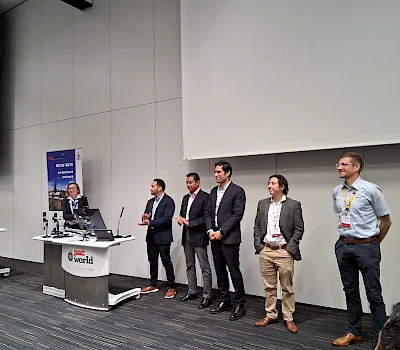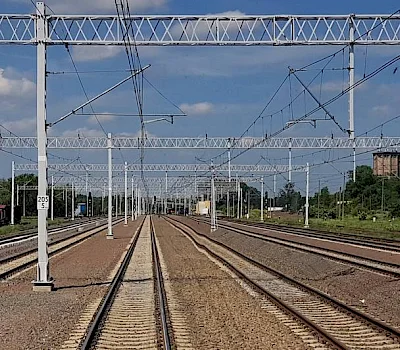We will start the article with a truism/thesis: The accuracy and reliability of time synchronisation is fundamental to the proper operation of 5G networks. But why is this the case?
Why is synchronisation in 5G so important?
It is all contained in the technology. Achieving the performance and usability goals of 5G is directly linked to the specification of the solutions used. The individual technologies used in 5G are time-sensitive technologies and need extremely accurate and precise synchronisation to function properly. Furthermore, 5G technology has been designed for Industry 4.0 applications, where there is often a need to provide data transmission and time synchronisation services for industrial processes. Supporting processes for controlling autonomous vehicles, virtualisation of reality are further applications that can be realised in a 5G network, but only with the active participation of precise time synchronisation delivered as a correlated service.
Vulnerabilities of 5G networks – selected time-sensitive technologies
In the 5G RAN, the most common method of using the radio spectrum is TDD (Time Division Duplex). TDD uses a single frequency band for both downlink and uplink, with each direction transmitting information in specific time slots. TDD radio frames inherently require synchronisation; not only of time, but also of phase, frequency, frames and slots. Synchronisation of these parameters between base stations and UEs (User Equipment) ensures that the two signals do not interfere with each other and therefore do not adversely affect network performance.
OFDM (Orthogonal Frequency Division Multiplexing) is another technology on which 5G is based. OFDM’s task is to reduce interference affecting network operability, the execution of which requires both time and frequency synchronisation. Any offset can be critical to the performance of the network – a time offset can result in an erroneous selection of the start time of a received and down-converted OFDM frame, and a frequency offset can result in a loss of subchannel orthogonality and the occurrence of ICI (Intercarrier Interference).
The use of CA (Carrier Aggregation) in 5G networks, in addition to the advantages of better performance and a wider carrier spectrum, is also associated with network vulnerability to timing errors. To deliver faster speeds and greater network capacity, CA needs good timing synchronisation between transmitter and receiver. This is because of how carrier aggregation works – at exactly the same time the transmitting device needs to send data and the receiving device needs to receive data.
The fifth-generation mobile network also uses CoMP (Coordinated Multipoint). While improving service capabilities in edge cells, CoMP introduces high timing accuracy requirements due to the need for close synchronisation between radios within a cluster. It allows cells in a micro (small cell) environment to achieve almost the same capabilities as in a macro (macro cell) environment. This is a technology whose importance is growing with the development of 5G.
In addition, timing accuracy is essential to support technologies such as Time Division Duplex (TDD), in which both the uplink and downlink are on the same frequency, and beamforming, which allows beams to be directed to multiple users and IoT devices. There are also other advanced technologies that are associated with 5G, such as dynamic spectrum sharing (DSS), carrier aggregation and massive MIMO – all of which require precise timing synchronisation to work properly.
How to check quality of synchronisation?
Checking the quality of time synchronisation should be performed by devices independent of the ePRTC time sources installed in the access network. In order to be able to control the quality of synchronisation, a reliable monitoring probe is required – i.e. one that has its own reference time source and, by reference to it, will show the actual state of time synchronisation (PTP) and frequency synchronisation (SyncE) of the network.
Monitoring can be done either permanently (probes installed permanently on selected sites) or through portable probes. The first approach saves operating costs but requires investment in multiple monitoring devices. Telecommunications testers with PTP and Synce monitoring options are expensive solutions and often do not have master software to track network behaviour and alert the operator. Hence, they are inefficient and expensive for such applications. Specialised probe solutions are definitely better suited.
In our offer you will find a monitoring probe that not only fulfils the above-mentioned assumptions, but also provides many more possibilities and facilities – QUAZAR-700.
The QUAZAR-700 manageable network synchronisation quality analyser allows you to monitor a whole range of key parameters: PTP 2WAY TE, PTP datasets, SyncE TIE, SyncE MTIE, SyncE TDEV, as well as SSM (change logging). For the user’s convenience, the monitoring of TE (Time Error) and MTIE (Time Interval Error) has been extended with the possibility of graphical presentation of their graphs in real time with a wide range of sampling parameters.
In addition to this, the Q-700 also allows for network synchronisation using signals such as: Ethernet, PPS, 10MHz, E1 G703/G.704, ToD and additionally IEEE 1588-2008 v2 PTP with Master Clock or Boundary Clock modes.
In the QUAZAR-700, we have ensured that configuration is intuitive and easy. Thanks to the built-in HTTPS server, SSH, local RS232 console and SNMPv.3 agent, configuration of the device parameters can be done securely via a web browser or using the CLI command line. The device’s predefined probe modes allow even novice users of the device to correctly configure and prepare for synchronisation quality measurements for typical measurement applications. The applications available are:
● local measurement – where access to the device and synchronisation analysis is performed via the local ETH port;
● continuous measurement – is a mode designed for network monitoring. The probe sends the measured data to a database, and access to the collected data is via the dedicated QuazarNet management system;
● continuous measurement in a master/slave application – Where there is a problem with the installation of a GNSS antenna or insufficient GPS signal, the QUAZAR 700 can also work as a measuring probe (then the source of the reference clock must be another QUAZAR-700 probe).










